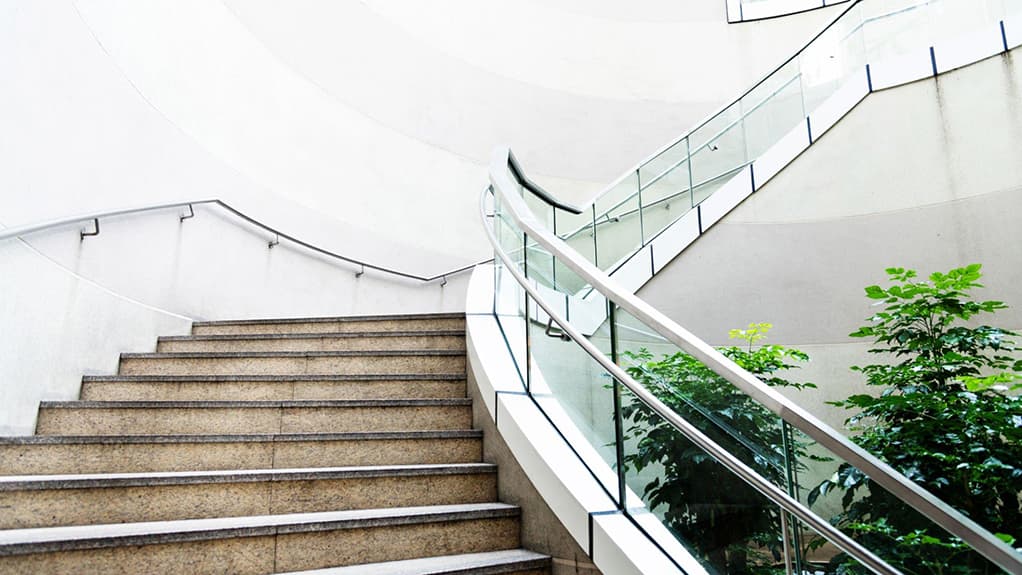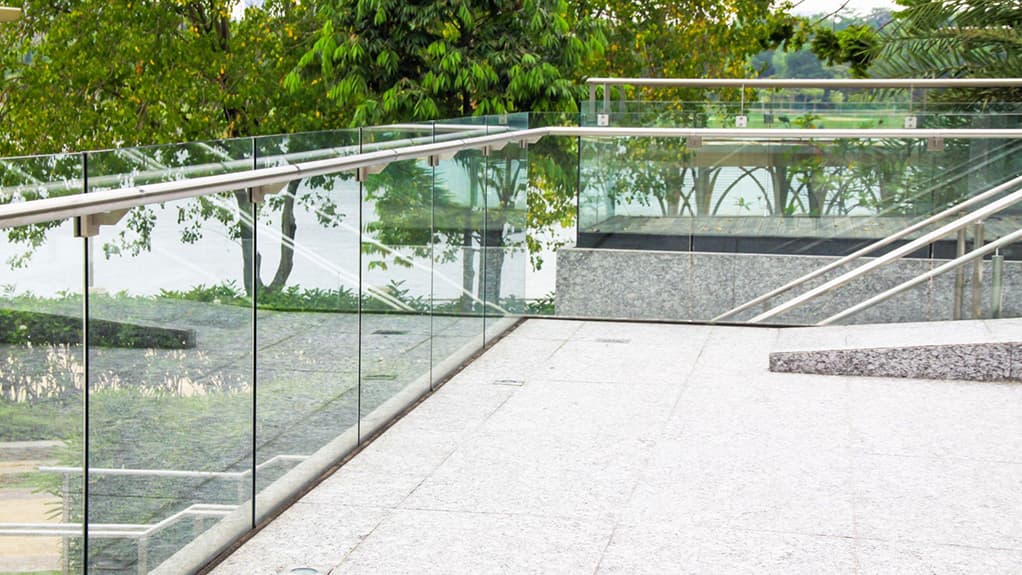Despite popular misbelief, stainless steel can rust, and so will your stainless steel railing if not maintained. How prone a stainless steel railing is to rust depends on several factors, such as the environment it is in and the steel’s chemical composition.
Table of Contents
Chromium is the primary alloying element that turns carbon steel into stainless steel. It creates a layer of chromium oxide that essentially seals the iron. This process prevents the iron from reacting with the environment. As a result, the metal doesn’t rust and remains shiny and lustrous.
However, environmental factors and exposure to acidic substances can damage the chromium oxide layer. Salt, chlorine, and neglecting cleaning and maintenance speed up this destructive process.
When rust occurs, the structural integrity of the whole railing system could be at risk and fall below the safety standards. Homeowners and property managers must take the necessary precautions to eliminate the risk of rust and corrosion.
In this article, we’ll talk about just that – how to protect your stainless steel railing systems from rust and corrosion. Continue reading to discover tips that will save you thousands in replacement parts and repair costs.

Causes of Rust and Corrosion on Stainless Steel Railings
As briefly touched on, rust and corrosion appear when the iron in the steel reacts with the environment. The chromium in stainless steel forms a chromium oxide layer on the surface. When this layer gets damaged, the iron starts reacting with the environment.
This problem can happen due to neglecting cleaning, damages, improper installation, and exposure to corrosive substances.
It’s essential to note that not all stainless steel is equal. Some are more prone to rust than others. The chromium content, along with other alloying elements that contribute to corrosion resistance, such as nickel and molybdenum, all play an equally important role.
That’s why we use different stainless steel with varying corrosion resistances at Unity Metal – to meet the needs of our clients in indoor and outdoor applications.
Yet, even the most corrosion-resistant steel can rust. Overlooking cleaning, exposure to salt and chlorine, and deep scratches can cause rust and corrosion before you know it.
If the metal corrodes or builds up rust, this will not only affect the metal’s appearance but also pose a safety risk to users. Homeowners and property managers must inspect for corroded or rusted parts to repair and prevent them from spreading.
Tips for Protecting Your Stainless Steel Railings
Corrosion and rust can be scary. Keep in mind the following tips to give neither a chance of ever becoming a problem for your stainless steel railing.

Clean Regularly
Regular cleaning comes at the top of stainless steel railing maintenance. It is essential because it removes contaminants, chlorides, and moisture. By doing so, the stainless steel surface remains free from corrosive substances.
Aside from reducing the chances of rust and corrosion, regular cleaning means your stainless steel railing will stay in top condition. Plus, it doesn’t take much effort and resources. Wiping the stainless steel railing hardware and fittings with a simple water and dish soap solution and thoroughly rinsing is all it takes.
Avoid Exposure to Salt and Chlorine
Salt and chlorine, containing harmful chloride ions, can damage the protective chromium oxide layer. These corrosive substances are present in everyday environments, from traces of salt on the hands of diners to chlorine residue in cleaning products. In coastal areas, the sea breeze can also expose railings to salt.
While complete avoidance is best, it’s not always possible, especially in high-traffic commercial areas where railings are frequently touched. Clean railings regularly using non-chlorine agents to counteract potential rust and corrosion.

Apply a Protective Coating
Applying a protective layer to stainless steel railings can significantly enhance their resistance to rust and corrosion. You can use various coatings, from anti-corrosion sprays to wax-based polishes. These coatings create a barrier between the railing and the environment, shielding it from corrosive elements.
Invest in a protective coating that suits your railing’s environment. This simple step minimizes the impact of everyday wear and tear, ensuring their appearance for years. Protective coatings also somewhat lengthen the required frequency of cleaning.
Inspect and Repair Any Damage
Routine inspection and quick repair of damages are vital in preventing rust and corrosion on stainless steel railings. Even minor scratches or dents can weaken the protective chromium oxide layer, making the surface harbor moisture and corrosive substances.
Inspect your stainless steel railing regularly, especially the parts often used, such as handrails. Look for scratches, discoloration, dents, and incorrectly installed components.
If you spot these, address scratches with non-abrasive pads and remove discoloration by cleaning. Repairing dents is quite tricky. But you can use a heat gun to expand the metal to undent the parts. Before adjusting poorly connected hardware, clean it to ensure it’s free from moisture and dirt.

Additional Tips
Avoid abrasive cleaners: Never use scouring pads or abrasive cleaners, as they can scratch the stainless steel surface. Instead, use mild, non-abrasive cleaning agents, such as dish soap or a dedicated stainless steel cleaner. Use a soft cloth or sponge to apply the cleaning solution when wiping.
Rust removal: If you notice any signs of rust on your stainless steel railings, it’s critical to address them immediately. Otherwise, it can become a much bigger problem by spreading. Use a stainless steel rust remover, and follow the manufacturer’s instructions for application.
Keep indoors ventilated: Stagnant air and high humidity can cause rust indoors. Ventilate the indoor spaces where stainless steel railings are to prevent corrosion and rust.

Conclusion
Maintenance and inspection are essentials for protecting stainless steel from rust and corrosion. Regular cleaning, inspections, applying protective coatings, and addressing faulty parts will guarantee your stainless steel railing’s shine.
Additionally, choose a grade of stainless steel appropriate for the environment. At Unity Metal, we manufacture different types of stainless steel railing systems suitable for every budget, design preference, and area requiring a safety barrier.
Contact us to request a free quote, and let us help you source the best railing hardware and fittings for your next architectural project.
